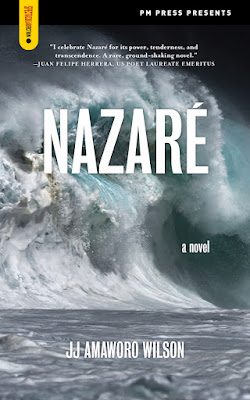“Black Rain” by Masuji Ibuse, 1969
This is a graphic description of the aftermath of the bombing of Hiroshima, Japan on August 6, 1945. While the aesthete translator of this book, John Bester, thinks this it is “not about the bomb at all” it actually is. C.P. Snow claims it "...turns Hiroshima into a major work of art." Yet the text is very matter-of-fact, dry and journalistic. Ibuse is a native of Hiroshima and knew the city intimately. It is the story of the Shizuma family - Shigematsu, Shigkeco and their niece Yasuko, who walked through and survived the calamity. Shigematsu writes down his memories of those days, in detail, which form the heart of the story.
To escape north, the family trudges and crawls around burning buildings, avoiding flying tiles due to wind and explosions, deadly burns, radiation poisoning, downed power lines, broken bridges, crushed buildings and fetid water. They are surrounded by floating bodies in rivers and canals, splayed humans, injured refugees, burnt soldiers, dead animals, burned bodies. They breathe heavy smoke, dodging potential injuries and fires, hungry and exhausted, as they head towards a fabric factory on the outskirts of Hiroshima where Shigematsu works.
Through this walk, they realize the extent of the disaster, though they still don’t know about radiation - but it is definitely not just another air raid. For a long time the dark mushroom cloud blackens the sky, causing astonishment as to its nature. Earlier, a potentially radioactive ‘black rain’ came out of the sky and stuck to Yasuko’s skin, which later made her a dubious engagement prospect and worse. Of course another kind of 'rain' was the incendiary bombs dropped on many Japanese cities, razing their wooden structures to the ground.
Truman lied when he announced the bombing of Hiroshima as an attack on military facilities, as the bomb landed in the middle of a civilian city. He said nothing about dropping it to protect U.S. soldiers - but in a chest-pounding announcement declared it an act of revenge for the attack on Pearl Harbor. Criminal acts by Japanese fascism in China, Korea or the Philippines were never mentioned either.
Ibuse writes in an older, somewhat archaic style, with many references to buildings, temples, bridges, train stations and places in Hiroshima, which for someone without a map or unfamiliar with the city is very confusing. The Shizuma’s own house is only ashes. It seems that they actually walk towards the center of the city for a while to escape, going against the flow of the walking injured. Eventually they turn north and reach a working train station, which takes them away to a town on the outskirts where his factory is located.
The Shizumas stay in the factory dormitory, then a detached house. Every official function is in chaos, so as a civilian Shigematsu is charged by his boss with the job of reading Buddhist prayers over the bodies of the dead. After his readings pillars of fire come from burning corpses in pits along the river. Shigematsu is ordered back to the city to find coal, witnessing piles of dead stacked like cordwood in a criss-cross fashion. He can see across the whole city to the hills surrounding, as it is a burned-out waste. Flies and the smell of death pervade everything. Rescue parties that entered the city after the bombing were decimated, and in need of rescue themselves. Hostility to the Japanese military and the war hovers below the surface among the civilians, but is sometimes corrected as 'defeatism' even if true.
Remembrances of another man is included, specifically about the 'reception centers' in elementary schools chock full of injured, burned and radioactive people dying left and right, of which he was one. His sufferings from radiation went for months. The Japanese had no real antidote. All this time Shigematsu's left cheek is burned also and he’s had to change bandages periodically. As you read, you wonder if the family will get radiation sickness, especially Yasuko. People who tended the sick, or who spent a lot of time searching for relatives or comrades in the ruins, begin to die or get severely sick.
This story focuses in detail on how humans try to survive a heart-breaking disaster – something regularly occurring now from war, environmental destruction, hunger and poverty. However, Hiroshima was not a ‘natural’ disaster - it was man-made or imperialist-made - a war crime. Reading it is an exercise in empathy for U.S. citizens, at the least.
Prior blog reviews related to this subject, use blog search box, upper left, to investigate our 14 year archive, using these terms: “Hiroshima and Nagasaki,” “GOT – Where are the Pitchforks?" "Leaving World War Two Behind,” “Silence,” “Seaspiracy.”
And I got it at May Day’s excellent cut-out and used
section!
Red Frog
November 30, 2021












